http://tamadance.wiki.fc2.com/wiki/1.4%20On%20What%20Can%20Be%20Led%20Or%20Followed
より
対訳
1.4 On What Can Be Led Or Followed
何をリード・フォローするのか
Another aspect of leading/following is what can be led to whom.
リード・フォローに関するもう一つの側面は、誰に対して何をリードしうるかと言うことである。
Someone taking lessons and only getting to a dance once a month is probably learning how to take lessons more that they are learning to dance.
レッスンを受け、ひと月に1回ダンスパーティに行く程度の人は、おそらくはダンスの踊り方を習得するというよりレッスンの受け方を習得するということになるだろう。
But, those people are still a lot more fun to dance with than the ones who only get to a dance once a month with no lessons in between.
とはいえ、その間レッスンを受けずにダンスパーティにだけ行く人たちよりは、ずっとダンスを楽しむことができる。
One local coach (Michael Gillon) had three categories for dance patterns:
あるコーチはダンスパターンを三つのカテゴリーに分類した。
tama注: ここでは「ダンスパターン」という言葉は、「フィガー」という用語に近い意味で使っていると思われる。以下フィガーと訳す。
Those that could be led to anyone (presumably someone off the street);
誰に対してでもリードが可能なフィガー(おそらくは近くの通りから引っ張ってきた誰に対しても)
Those that could be led to a follower knowledgeable in the style of dancing but not that particular pattern; and
そのダンスのスタイル(tama注:ダンスの種目)を知ってはいるが、その特定のフィガーは知らないフォロアーに対してリードが可能なフィガー
those that could be led to a follower trained in that particular pattern.
その特定のフィガーについて教えられたフォロアーに対してリードが可能なフィガー
It is important to categorize the figures you lead when you are dancing with different partners so that you don't crash and burn upon attempting to lead type 3 figures on a type 1 follower.
いろいろなパートナーと踊っている時に、リードするフィガーを上記のように区別することは、特に、タイプ1のフォロアーにタイプ3のフィガーを仕掛けて衝突したりトラブルを引き起こしたりしないようにするためには、たいへん重要である。
____
One of my teachers gave me some sound advice on dancing with those less skilled than you:
ある先生は、自分よりも技量の劣った人たちと踊ることについて、私に明確なアドバイスをしてくれた。
Accommodate their imperfections so they look good but do not minimize your technique.
彼らが上手に見えるように彼らの欠点をカバーしてあげなさい。しかし自分の技術を出し惜しみしてはいけません。
Become aware of their balance at all times because when they unbalance you it is because they are falling out of balance.
どんな時も彼らのバランスに注意すること。というのは、彼らがあなたのバランスをくずすときと言うのは彼ら自身がバランスをはずしそうになっているからです。
If you can feel this happening then greater compression on your part is needed.
もしこれがおこることを感じたら、あなたのほうで、大きめの力で支えることが必要です。
Reframe the dancing--heck if I can dance with those ladies and make them feel good then the easy to lead dancers are a snap.
もし私がそういった女性たちと踊って彼女たちを気分よくさせられたら、リードしやすいダンサーなんてわけないことです。
It then becomes a challenge rather than a chore.
そうなったらリードというのは煩わしいことではなくてチャレンジしがいのあるものになります。
Create situations whereby the lady has no doubt about your intentions: i.e. overstate the case.
女性があなたの意図について何の疑問も持たない状況を作り出すこと、たとえば事件を大げさに説明するなどのように。
I used to think that only when you can smoothly lead *any* partner through every step are you ready to move on, but that is wrong.
If you are dancing to compete, then you need to be able to lead your competitive partner well.
もし競技ダンスをやっているならば、競技のパートナーを上手にリードできることが必要である。
She may be (probably is) better than the average social dancer, and therefore does a better job with a worse lead.
パートナーのほうは平均的な社交ダンスの踊り手よりも上手だろうし、下手なリードでも上手な仕事をするだろう。
My partner and I agree that social dancing is the real test of your technique and proficiency, but just because I can't do a throwaway oversway with anyone on a social floor doesn't mean we shouldn't have that figure in a routine!
私のパートナーとは、以下の点で意見が一致した。
その点とは、ダンスを社交の場で踊るということが自分の技術や習熟度の真のテストであるが、しかしそれは単にそういったフロアで誰とでもスローアウェイ・オーバースウェーを踊れないというだけのことであって、それが、我々がルーティンでそのフィガーを踊ってはいけないということを意味するわけではない。
When I was sticking to the "I want to lead anyone" attitude towards lessons, we weren't progressing very quickly as a partnership.
もし私がレッスンに向けて「誰でもリードできるようになりたい」という態度に固執していた間は、パートナーシップというものをそれほど速くは育てることはできなかった。
I think a leaders skill at a figure can be broken down into four levels:
わたしは、あるフィガーにおけるリーダーの技術は4つのレベルに区分できると考えている。
basic understanding (can do with professional instructor)
基本的なことは理解している (プロのインストラクターとならできる)
understanding (can do with a good amateur partner who also knows the step)
理解している (そのステップを知っている上手なアマチュアのパートナーとならできる)
good understanding (can do with an amateur partner who doesn't necessarily know the step but is a good dancer)
良く理解している (必ずしもそのステップを良く知っているとは言えないが上手なダンサーとならできる)
mastery (can do with virtually anyone)
精通している (実際上は誰とでもできる)
____
Interestingly enough, I have had the most success with when dancing with non-dancers in Swing and V. Waltz.
大変興味深いことであるが、私はスイング(tama注:ウェストコーストスイング、イーストコーストスイングなど)とヴェニーズワルツでダンスを知らない人たちと踊るときに最も成功を収めた。
Swing has a sufficiently flexible hold to permit close control of what the lady is doing.
スイングは、女性のパートを密にコントロールすることが可能なように十分にフレキシブルなホールドをすることができる。
Viennese waltz is so fast the lady doesn't have time to make a mistake.
ヴェニーズワルツは、女性が間違ってしまう時間がないほど速い。
It's the slower dances, where the lady has time to think and to try to do something that she thinks is right (rather than moving naturally) that are tough to lead beginners through.
大変なのはもっと遅いダンスで初心者をリードすることである。その場合、女性は考える時間があるので、自分が正しいと思う何かをしようとする(自然な動きでなく)。
____
Mario Robau surprised me by telling me that he would happily give up his two US Open trophies to be able to dance well with any woman out on a dance floor.
Mario Robauは「ダンスフロアで、どんな女性とでも上手に踊れることができるなら、自分が得たUSオープンのトロフィー二つを喜んで手放すよ」と言って私を驚かせた。
One of the most difficult skills in dancing is the ability to dance well with anyone.
ダンスにおいてもっとも難しい技術の一つはだれとでも上手に踊れる能力である。
This not only requires being able to adapt your leading/following style to that of your partner, but also being able to adjust your repertoire of moves to your partner as well.
この能力は、単にあなたのリード(フォロー)のスタイルを相手のフォロー(リード)のスタイルに合わせるだけでなく、同様にあなたのムーブメントのレパートリーを相手に合わせることもできなければならない。
Mario told me that when he dances with a woman for the first time, he leads her through "test" moves, easy moves that she can follow but which give away her following ability.
Marioは私にこう言った。初めての女性と踊るときは、テスト的ムーブメント、すなわち、彼女がフォローできるけれど、彼女のフォローの能力を明らかにするようなやさしいムーブメントにリードする。
Afterwards, he selects only those moves which he knows she will be able to follow.
そののちに、彼は彼女がフォローできることができるであろうと自分が理解したムーブメントだけを選ぶ。
A woman who is a beginner need never fear dancing with Mario; he will always make her look good (and himself as well).
初心者の女性は、Marioと踊るのに恐れを持つ必要はない。彼は常に彼女が上手に見えるよう(もちろん彼自身も同様に)踊る。
____
One of the most common leader mistakes is trying to lead a less experienced follower through complex moves.
もっともよくあるリーダーの間違いの一つは、より経験が浅いフォロアーを複雑なムーブメントに導くことである。
Intermediate and advanced dancers should start simply and work up to more complicated moves as the tenderfoot follower is ready.
中級程度ないし上級のリーダーは、最初簡単なものから始めて、そのうえで足元のおぼつかないフォロアーが準備ができたとき、もうすこし複雑なムーブメントに導かなければいけない。
When you show off the nifty move you learned at the last workshop, and the follower can't cope, you both look terrible...
もしもあなたが一番最新の勉強会で覚えたかっこいいムーブメントを見せびらかそうとし、しかしフォロアーがうまく処理できなかったら、両方ともひどくへたくそに見える。
when you do simpler moves with elegance and confidence, and the follower is happy and on the beat, you both look fabulous.
しかしあなたがもっとシンプルなムーブメントを優雅にしかも自信をもって踊り、かつフォロアーが(そのムーブメントを)楽しんでかつビートに乗れているならば、あなた方両方とも素敵に見えるだろう。
If the follower loses the beat on an underarm turn, it is very likely that she will be lost on the subsequent pattern, so make sure she is on the right foot before you continue.
http://tamadance.wiki.fc2.com/wiki/1.5%20On%20The%20Importance%20Of%20Dancing%20With%20Beginners
より
対訳
1.5 On The Importance Of Dancing With Beginners
初心者とダンスを踊ることの重要性
While there is no question that dancing with a better partner will make you *look* good, and that with such a partner you can concentrate more on styling details and so on because the lead and follow doesn't need so much attention, it is not the best way to practice lead/follow skills.
上手なパートナーと踊ることがあなたをうまく見せるということ、そしてそのようなパートナーとであれば自分のスタイルの細部に集中することができることなどについては疑いはありません、というのはリードとフォローにそれほど多くの注意を払わなくてもよいからです。
If learning leaders only dance with accomplished followers and vice-versa, they won't develop great leading/following skills, because they won't *need* to.
しかしそれはリード/フォローの技術の練習方法としてはベストとは言えません。もし、習熟途上のリーダーが、完成されたフォロアーとだけ踊るならば、優れたリード/フォローの技術を身につけることはないでしょう、というのはそれが必要ではないからです。
Now let's suppose that YOU are a great leader or follower.
さて、あなたが優れたリーダーないしフォロアーだと仮定してみましょう。
What happens if you dance only with other great dancers?
もしあなたが他のすぐれたダンサーとだけ踊ると何が起こるでしょうか。
Your lead and follow skills will gradually *deteriorate* -- because you're not working them very hard.
(その結果)あなたのリード/フォロー技術はだんだん衰えてきます、というのはあなたがその技術を目いっぱい働かさないからです。
After some months without exposure to beginners, you may be surprised to find that you can't dance with them very well, even though they seem to do okay with other beginners.
初心者と踊らずに数ヶ月経つと、他の初心者と踊るとうまく踊っている初心者と踊ったとしても、あなたが踊るとうまくは踊れないということを発見して愕然とするかもしれません。
____
You learn how to dance better by dancing with more experienced partners.
より経験豊かなパートナーと踊ることで、あなたはよりよく踊る方法を身につけるでしょう。
But you learn how to lead/follow better by dancing with less experienced partners.
しかし経験の少ないパートナーと踊ることで、あなたはよりよいリード/フォローの方法を身につけるでしょう。
Your skills are put much more to the test dancing with a beginner than with an experienced dancer.
経験豊かな相手と踊るより、初心者と踊ることのほうが、あなたの技術を試す、より多くの機会に置かれることになります。
It is easy to lead/follow a great dancer.
すぐれたダンサーとのリード/フォローは容易なのです。
All your weaknesses as a leader/follower show up with beginners.
初心者と踊ると、リーダー/フォロアーとしての弱点がすべて表に出てくることになります。
Dance with them and ask yourself why each incorrectly led/followed figure didn't work and when you figure it out, work on incorporating the fixes into all your dancing!
彼ら初心者と踊りなさい、そして、なぜ間違ったリード/フォローのやりかたそれぞれがどうしてうまく働かないのか、自問してみてください、そうしてその原因を見つけだしたら、あなたの踊り方すべてにそれらの解決方法を盛り込むよう練習しなさい。
You cannot become a good dancer by dancing _only_ with the same person.
あなたは、同じ人とだけ踊っていたのでは、優れたダンサーになることはできないのです。
____
Dancing only with each other, you will become good at dancing with each other with all the mistakes and bad habits that become "correct" for you.
お互いに同じ人とだけ踊っていると、あなたたちだけにとって「正しい」、すべての間違いや悪い癖を身につけたままで「お互いと踊ることだけが上手」になることになります。
____
There is a certain type of character (leader) that one encounters again and again if one has been dancing for any length of time: the guy who only wants to dance with the best followers because he believes they are the only partners who can match his high skill level.
だれでもある期間ダンスを踊っていた場合、再々出っくわすあるきまったタイプのリーダーがいます。それは、最上のフォロアーとだけ踊りたがる輩です。というのは、そういうフォロアーだけが、彼の高い技術レベルにマッチすることができると信じ込んでいるからです。
Often what is REALLY going on is that only the best followers can compensate for his mistakes or idiosyncrasies.
実のところしばしば起こっているのは、ベストフォロアーだけが、彼の過ちや癖をおぎなってあげているだけなのです。
They make him look good.
ベストフォロアーが彼をよく見せているだけなのです。
But the guy continues to think he's the tops because he insulates himself from feedback.
でもその男は自分はトップだと考え続けるのです。というのは周りからのフィードバックから耳をふさいでいるからです。
Dancing with poor to average followers is a good reality check.
下手ないし平均的なフォロアーと踊ることは、何が真実なのかを知るよいチェック方法なのです。
If none but the best can follow your leads, I respectfully suggest your leads could use some work. (Kelly Buckwalter has expressed a similar idea in her classes).
もしベストのフォロアー以外あなたのリードについてこれないのなら、あなたのリードにはなにか改良すべきところがあると言わせて頂きます。
Also, that kind of thinking ultimately harms their dancing.
また、そのような考え方は結局あなたのダンスを阻害することになります。
I've seen guys overestimate their ability and abandon the study of technique FAR too soon.
わたしは自分の能力を過大評価して、あっというまに技術を磨くことを放棄してしまった輩を(何人も)見てきました。
Consequently it will take them a lot longer to reach the next level of skill.
必然的に、彼らが技術の次のレベルに達するのにずっと長い時間がかかります。
http://tamadance.wiki.fc2.com/wiki/1.6%20On%20The%20Way%20Dancing%20Is%20%28mis%29taught
より
対訳
1.6 On The Way Dancing Is (mis)taught
正しい教え方、誤った教え方
Most teachers teach dances rather than dancing, because it's easier.
多くの教師は「ダンスの踊り方」よりいろいろなダンスステップを教えがちである。というのはそれのほうが楽だからである。
But the focus on steps in dance teaching may be the biggest single obstacle to the learning of dancing well.
しかしダンスを教える際に、ステップに重きをおくことは、上手なダンスの踊りかたを身につける上で、それだけで最大の障害になりうる。
This is best summed up in the following quote: "Bad teachers taught me steps, great teachers taught me dancing."
このことは、つぎの言葉に最もよく集約されている。
「質の悪い教師たちは私にステップばかり教えたが、優れた教師たちはどのようにしてダンスを踊るかを教えてくれた。」
Learning the pattern of the week is not the key to success.
「その週のパターン」なるものを習得するのは成功への鍵ではない。
Being able to lead that move in a club is much more important.
クラブなどでその動きをリードできるようになることが、ずっと重要なのである。
For the lady, being able to follow a weak leader is the mark of a good dancer.
女性ならば、あまりリードできない男性にフォローできることが上手なダンサーの証なのである。
A lot of people miss this very important basic concept in any partner dance:
どんなパートナーダンスであっても大変重要なこの基本概念を、数多くの人たちが見失っている。
We need to teach women to follow their partner, NOT the exact foot placement instructions that this or that instructor says is the "right" way to do it.
われわれは女性に相手の男性をフォローすることを教える必要がある。決して、そこいらの教師が「これが正しい方法ですよ」と言うような、きっちりした足の置き方などではない。
Narrow-minded instructors who say that this or that way is the RIGHT and ONLY RIGHT way to do it usually end up producing dancers who can only dance with other people who have learned by those exact same rules.
これなりあれなりが唯一正しい方法ですなどという、視野の狭い教師たちは、大体にして、そういった正確に同じ決まりを習得した人たちとだけしか踊れないダンサーを作り出すことで終わってしまうのである。
I GUARANTEE that Robert Cordoba's rules of WCS are not identical to Mario Robau Jr.'s or Barry Durand's or etc., etc.
ロバート・コルドバのWest Coast Swingのルールがマリオ・ロバウやバリー・デュランドのルールと同じではないということについては私が保証する。
Teaching dancers lead/follow allows them to adapt to different styles easily.
ダンサーたちにリード/フォローを教えることこそが、彼らが違ったスタイルの踊りに容易に適応できるようになるのである。
The dancer I teach will be able to adapt to the one you teach and dance comfortably with him/her.
(そうすれば)私の教えるダンサーは他の人が教えるダンサーに適応して心地よく踊ることができるようになるのである。
The dancer taught exact foot placement rather than following will end up being an elitist dance snob and be unable to dance with anyone who has learned in the different styles which DO exist and are taught in various parts of the country by very reputable instructors.
フォローよりむしろ正確な足の置き方を教え込まれたダンサーは、そのことを自慢にするような、偉ぶった輩になるのが落ちであって、違ったスタイルを習得したダンサー(それも、他のさまざまな地域で、名の通った教師たちに教えられたダンサー)とは踊ることができないのである。
____
Many teachers don't teach connection, instead they teach step sequences which make beginners feel that dancers just happen to be holding on to each other as they trace out memorized step sequences with their feet.
多くの教師は、「コネクション」を教えず、代わりにステップシーケンスを教える。そのことは、初心者に、(tama注:あたかもダンスとは)自分たちが足で覚えたステップの順番をなぞっていく間、たまたま偶然にホールドしているといった気持ちにさせる。
Lead/follow exercises are an essential foundation to provide students with, possibly the most important thing dance instructors do.
リード/フォローの練習は、ダンス教師が教えるおそらくはもっとも重要なことを、生徒に提供する本質的な土台となるものである。
The most essential things -- posture, balance, appropriate force (tiny), small steps, appropriate contact (incl. eye contact), rhythm recognition, leading/following, etiquette, floorcraft -- these are hard to teach, and most teachers would rather "have taught 20 moves" than "have developed 10 essential concepts".
最も本質的なもの、それは、姿勢、バランス、適切な力(ほんの少しの)、ちょっとしたステップ、適切なコンタクト(アイコンタクトを含む)、リズムの認知、リード/フォローの方法、エチケット、フロアクラフトである。これらは教えるのが難しいので、多くの教師は本質的なものを10習得させるより、ステップシーケンスを20教えるほうに偏りがちである。
The trick is to overtly teach dances while covertly teaching dancing. Surreptitiously.
ダンスの踊り方を教えるのをおろそかにして、いろいろなダンス(のステップ)ばかり教えるのは、ごまかしである。
Rather than lecturing you want to drop little messages from time to time, such as:
____
You are responsible for your own balance -- don't rely on your partner to keep you from falling over.
自分のバランスは自分で責任を持て。自分が倒れないようにするのにパートナーを頼ってはいけない。
Think tall.
堂々と立て
After the swing the lady ends up on the right, _as_always_.
女性はスウィングした後は、いつも右足に乗って終われ。
____
Techniques that best illustrate the *feel* of lead/follow to students:
技術が生徒に対してリード/フォローする感覚をもっともうまく示すことができる。
the concept of "strongly connected" (aka "giving weight", "connecting with your partner's entire body through her hands'", etc.)
強いコネクションという概念(手などを通してパートナーのボディ全体とコネクションする、いわゆる「ウェイトを与える」として知られている概念)
(tama注:akaというのはas known asのことです)
illustrated by a teacher (Mario Robau) taking his partner's hand in his and saying, "when I tug at her hand I don't just want her hand, I want all of her". (showing first the non-dancer's, then the dancers response -- non-dancer: hand moves, then lower arm, then upper arm, then shoulder, and finally the rest, (sideways :-)
ある教師の例をとると、パートナーの手をとって、最初に素人の、次にダンサーの反応を示しながら、「彼女の手を引き寄せるときは、単に手がほしいのでなくて、彼女全体が必要なんだ」と説明した; 素人の場合、まず手が動き、次に前腕、上腕、肩、そして残りと動く。
Symmetrical (Scandi) hand-behind-shoulder hold. "The force on your palm should be the same as that on your shoulder (where your partner's palm touches it)"
バランスの取れた手-背中-肩のホールド; 「自分の掌にかかる力は、もし相手の掌が自分の肩に触れていたと仮定した場合の肩にかかる力と同一でなければならない」
Start from standing, then move around together, forward, back, and around each other, maintaining balanced force.
立った位置からはじめて、力をバランスさせたままで、一緒に、前進、後退、お互いの周りを回るなど、一緒に動いてみること。
Natural leading/following conventions are fundamental - "natural being those that need no external explanation, since they rest on principles of physics and knowledge of how people's bodies move.
自然なリード/フォローの約束事こそが基本、すなわち何の余分な説明もいらない自然な存在でいることである。というのは、それらが、人間の体がどう動くかと言う物理学の法則と知識に基づいているからである。
____
Debbie Ramsey writes: I go the extra mile to make sure that I know a pattern both from the lead and follow position.
デビー・ラムゼイは「リードとフォローの両面から、あるパターン(訳注:ステップないしアマルガメーション)を理解しているという確認を得るためならさらに1マイルだって歩く」と言っている。
When I teach I explain the lead from both a foot and a body position, showing the leaders where and when their body (center) must move to continue the connection throughout the pattern.
私がダンスを教えるときは、足とボディの位置の両方からリードと言うものを教える。その時リーダー達にそのパターン(tama注:アマルガメーション)全体を通してコネクションを維持するために、どこに、いつボディー(中心)が動いていかなければならないかを見せながら教える。
I also explain to the followers the need for them to wait to be led and how the pattern should feel.
またフォロアーには、リードされるのを待つ必要性、そしてそのパターンがどのように感じられるはずなのかを説明する。
I go to great lengths to teach "lead and follow" in all of my classes and I even go as far as handing out a list of patterns to the leaders (which they do not show to the followers) so the followers follow rather than anticipate the patterns they have just learned.
私は私の団体レッスンすべてで「リードとフォロー」について大変長い時間をかける。その終わりのほうでは、フォロアー達が今習ったパターンを、予測して踊るよりむしろフォローするように、リーダーだけにそのパターンリストを手渡しする。(tama注:そして練習させる)
____
What worked best for me as a beginner was 1) developing a good lead, and 2) developing a nice repertoire of steps/patterns for each dance.
初心者のとき私にとってもっともうまく行ったのは、1)上手なリードを身につけること。2)ダンスのそれぞれについて、ひとつだけ素敵なステップやパターンのレパートリーを身につけること、だった。
Leading/following is a technique issue.
リード/フォローは技術的な課題である。
There are other technique items but a good lead/follow will take you a long ways and allow you to start having fun sooner than if you beat frame, posture, balance, arm styling, motion, etc. to death.
他にも技術的な項目はあるが、リード/フォローが上手になるのには長い道のりだとは言え、フレーム、ポスチャー、バランス、アームのスタイル、動き、等々を徹底的にやるよりも、より早く楽しめるようになる。
I have seen students bored to death when there instructors force a lot of technique upon them which can take a long time to master when they could reap short term benefits just developing a good lead/follow.
私は上手なリード/フォローを身につけるのに大した時間はかからないのに、インストラクターが、マスターするのに長い時間がかかる技術をたくさんやらせているので、死ぬほど退屈しているレッスン生を見たことがある。
As a single leader without a regular dance partner having a good repertoire of steps led well will take you pretty far.
きまったダンスパートナーがいないリーダーでも、素敵なステップのレパートリーが一つあれば、あなたをずっと遠くまで連れて行ってくれる。(訳注:上手に踊らせてくれる)
Being able to offer clear leads, follow them, give decent frame, keep time with the music, etc., are important early on.
明確なリードをする、リードをフォローする、音楽に合わせる等などができるようになることは早い段階から重要である。
It's inappropriate to have beginners spend lots of time on stuff like sway and swing and head position and foot placement when they could be learning more pragmatic social dance floor survival skills.
初心者がダンスフロアにおけるより実用的な生き延びる技術を身につけることが出来るのに、彼らにスウェー、スウィング、ヘッドポジション、足の置き方などに関して多くの時間を費やさせることは適切ではない。
The better your technique, the better you will dance with an arbitrary partner with arbitrary dance skills.
テクニックが良くなれば、決まっていない技術を持った不特定の相手と、より上手に踊ることができるようになる。
If you find that you can only dance well with certain people who took the same classes that you did, you definitely need better dance technique! :-)
もし、自分と同じレッスンを受けたレッスン生とだけうまく踊れるというのなら、よりよいダンスの技術を身につけることが間違いなく必要である!(笑)
____
When I was first learning, I wanted to learn the steps... most people do.
私が最初習い始めた時、多くの人がやっているステップを身につけたいと思った。
While I understand now the *importance* of lead and follow, as a rank beginner I only understood that the guy was supposed to lead a move and that I was supposed to follow it.
現在はリード/フォローの重要性と言うものを理解しているが、文字通り初心者としては、男は動きをリードすることになっており、自分はそれに従うことになっているとしか理解していなかった。
Partners of mine would get bored if instructors when on about lead and following skills too long.
もしインストラクターがリード/フォロー技術にあまり長く固執していたとしたら、飽きていただろう。
Ultimately, I really learned about following skills/correct arm tension from more experienced partners.
結局は、フォロー技術や正しいアームテンションについては、より熟練したパートナーから、学んだ。
It's very hard for two beginners together to learn to get this right.
初心者が二人でこれらを正しく学ぶことは非常に困難である。
Yes, it's a concept instructors should spend some time on, but most students are just worrying about their feet...
そう、それはインストラクター達がそれに関してある程度時間をかけるべきものであるが、たいていのレッスン生は単に自分の足元を気にしているだけである。
____
Non-dancers tend to think that dancing is step-sequences.
ダンスをしない人たちは、ダンスはステップの組み合わせだと考えがちである。
And the more step sequences they cram the more dancing they have learned.
そしてステップシーケンスが多ければ多いほど、身に付けたダンスがより多い。(tama注:と考えがちである。)
Teachers often succumb to this market pressure, and besides, anyone can teach step sequences but few can teach dancing.
ダンス教師たちはこのマーケットの圧力にしばしば屈してしまう。そしてさらに教師の誰もがステップシーケンスを教えることはできるが、踊り方を教えることができる教師がほとんどいない。
At least not simultaneously to many students, all of whom have individual needs.
多くの生徒たちに対して最低同時にとは言わないが、すべての生徒たちは、個人個人で必要なものは違うのである。
What some people like to marginalize as "styling" - posture, balance, weight change, appropriate force, basic timing and footwork, dancing with the music and with your partner ... these are the *essentials* of dancing.
ある人々が「スタイリング」として過小評価しがちなもの-それはポスチャー、バランス、ウェイトチェンジ、適切な力、基本的なタイミングとフットワーク、音楽とともに踊る、パートナーと踊る、これらはダンスの本質なのである。
The rest is just so many patterns.
のこりはただの数多くのパターンでしかない。
If you wanted to learn a language, the infrastructure of culture and grammar would be essential.
もし誰かが言語を習得しようとするなら、その文化と文法という基盤は本質的なものであろう。
Any dictionary can supply any number of words.
どんな辞書であれ、どのような数の単語を供給することは可能である。
Anyone who thinks they can learn a foreign language by translating word for word with a dictionary would be as foolish as someone who wants to learn to dance by concentrating on step sequences.
とはいえ、辞書で単語を訳すことによって外国語を身につけることが出来ると思う者は、ステップシーケンスによってダンスを習得したいと思う人と同じくらい馬鹿げている。
____
When I first started, I learned a basic set of (10) step sequences.
私が最初に始めたころ、10個のステップシーケンスからなる基本的なセットを習い覚えた。
Later I realized that those step sequences are purely didactic constructs designed to teach and practice smaller units.
のちにそれらのステップシーケンスは、より小さな単位で、教え、練習させるための教材にすぎないということを悟った。
They are like molecules, and eventually you learn about atoms, and how to assemble your own molecules from these atoms.
それらは分子のようなものであり、結局は原子について、および原子から作られる分子をどう扱うかといったものである。
Then, once you get to be really good, you discover about quarks ...
最後には真に習得すると、クォークについて発見することになる。
____
As I see it, dancing is not steps.
これまで見てきたようにダンスはステップではない。
Dancing is posture, balance, connection, leading, following, weight-changes, harmony, flow, and music.
ダンスは、ポスチャー、バランス、コネクション、リード、フォロー、ウェイトチェンジ、ハーモニー、フロー、音楽である。
But beginners are easily impressed with "fancy steps".
しかし、初心者は「見栄えのよいステップ」に容易に感銘を受けてしまう。
And teachers often succumb to the pressure to teach "fancy step sequences".
そして教師達も見栄えの良いステップシーケンスを教えろという圧力に、ついつい屈してしまう。
It's so much easier to teach them, than to teach dancing.
ダンスの踊り方を教えるよりもステップシーケンスを教えるほうがずっとやさしい。
The best teachers in any dance form emphasize the importance of doing the essentials well.
どんなダンスであってもベストな教師は、そのダンスのエッセンスを上手にこなすことの重要性を強調する。
Imagine learning a language.
外国語の習得を考えてみよう。
A lot of people want to learn slang words, impressive big words, or simply many, many words at the beginning.
多くの人が、最初の段階では、俗語や大げさな言葉、あるいは単に数多くの言葉を習いたがる。
And usually students memorize standard conversational phrases.
またふつうは学生たちは標準化された会話のやりとりを覚える。
While the canned phrases are useful because they provide the student with material to practice with, language really means having something to say, and being able to say it, not having a large number of phrases memorized and drilled.
決まった会話例は、学生に練習する種を提供するので役に立つ。とはいえ、言語と言うものは、本当は、なにか言いたいことがあって、そしてそれを言うことが出来ると言うことなのである。膨大な数のフレーズを記憶して練習しているということではない。
____
One danger with fancy steps is that it's tempting to think that if we can do the steps in the sequence, that we have accomplished something.
見栄えの良いステップに関する危険のひとつは、そのシーケンスのなかでそれらのステップを踊ることが出来たら、それで何かを達成したと思いたがることである。
So we keep doing the sequence, but we neglect the underlying basics. And practice makes permanent.
それでわれわれはステップシーケンスをやり続けるのであるが、その根底にある基本を無視してしまう。そしてそれが癖になってしまう。
(tama注:”Practice makes permanent”(練習をすることで、癖になってしまう)とは、”Practice makes perfect.”(練習をすることで完ぺきな演技ができるようになる=習うより慣れろ)のもじりだと思われる(笑)。)
It's like talking with all sorts of big words, but not having mastered natural pronunciation, or basic grammar.
それは、あたかも、あらゆる種類の大げさな言葉を話すけれど、自然な発音や基本的な文法をマスターしていないというようなものである。
Another danger is that the very process of teaching fancy step sequences to beginners conflicts with their learning to *dance* -- their attention is focused on the teacher, their own feet, their thought processes and memories, instead of being focused on their partner, the music, and being conscious of their surrounding environment.
もう一つの危険と言うのは、初心者に対して見栄えの良いステップシーケンスを教えると言うプロセスそのものが、初心者のダンスの習得と矛盾するということである。すなわち彼ら初心者の意識が、パートナー、音楽、そして周りの状況に意識を向けると言うことに向けられず、教師、自分の足、自分の思考過程、記憶に向けられてしまうということである。
____
How to learn to dance
ダンスの習得の仕方
Learn a few core patterns and some basic things about dance frame.
コアとなるいくつかのパターンおよび、ダンスの枠組みに関する基本的な事項を学ぶ
Now concentrate on technique, technique, technique, + leading and following (This definitely requires private coaching.)
そしてテクニックに集中すること+リード/フォロー(このためには個人レッスンが必要)
Do this at any pace comfortable to you.
あなたに楽なペースでこれを行うこと
Most beginners concentrate on patterns.
多くの初心者はパターンに集中する。
This leads to frustration and dance partners arguing and fighting with each other.
このことはフラストレーションを招き、パートナーとの間で議論とけんかを引き起こすことになる。
If you instead concentrate on technique, you will focus more on dancing well *yourself*, instead of casting blame on your *partner*.
もしあなたがその代わりにテクニックに集中するならば、パートナーを非難する代わりに、自分自身が上手にダンスを踊ることにより集中することになる。
The better your technique, the more dancing pleasure you will give to your dance partner.
テクニックがうまくなればなるほど、ダンスパートナーにダンスする喜びをより多く与えることになるだろう。
Then go back to learning more patterns. You will find it _very_ easy to pick up new patterns.
そのうえで、より多くのパターンの習得に戻ること。そうすれば新しいパターンを取り入れるのが非常に容易になることがわかるだろう。
Now observe those people who started learning about when you did, but concentrated on patterns and neglected . technique.
さて、自分と同じころに習い始めたけれど、パターンに集中してしまい、テクニックを無視した人たちを観察してみよう。
You will notice they are *still* trying to learn the same patterns you saw them learning a year ago.
きっと彼らが1年前に習い始めたのを見たパターンと同じパターンを「相変わらず」習得しようとしていることに気がつくだろう。
____
Keep this in mind as you read this compilation: dancing is taught backwards.
あなたがこのFAQを読むにあたっては、ダンスは後戻りする順序で教えられるということを念頭におくこと。
They start with a partnering situation teaching steps, and only then work on basics of body movement, lead/follow, etc.
すなわち、教師たちは、二人を組ませた状態でステップを教え、その次やっと、ボディムーブメント、リード/フォローなどの基礎について練習させるのである。
Teaching that you're in this position on 1, here on 2, like this on 3... is only a crutch to get you to do the pattern.
「はい、あなた、このポジション1、さあ、ポジション2、つぎポジション3でこのようにして」ということを教えるのは、あなたに、きまったパターンをさせるための支えにしかならない。
When you quit trying to be EXACTLY in those places on EXACTLY those beats, and start viewing those instructions as static snapshots of the real goal; CONTINUOUS MOVEMENT, your dancing will remarkably improve.
もしあなたが、「<正確に>この場所に、<正確に>このビートに合わせて」といったことから脱して、そういった指示は、真のゴールすなわち連続的な動きを、パチっと撮ったスナップ写真にすぎない、ということを理解し始めると、あなたのダンスは目を見張るほど改善されるだろう。
Beginners are generally too impatient and only want to develop enough skills to get around the dance floor.
初心者たちは一般的にせっかちすぎて、とにかくダンスフロアを動き回るのに十分な技術を身につけたいだけなのである。
They never would stick with it if they had to spend dozens of hours of practice before they ever got on the dance floor.
彼らはダンスフロアに上がる前に、何十時間もの練習を費やさなければならないのだったら、決してダンスにこだわることなどしないだろう。
It's the initial fun, when you don't know any better, that gets you hooked.
もっとずっといいものを知っていない限り、ダンスはあなたをとりこにする楽しいものなのである。
If it was all work and no fun, few people would do it!
もしダンスが、仕事でかつ楽しくないものならば、やろうとする人はほとんどいないだろう。
If you stick with it long enough, you will learn that one well executed open left or right turn (or what ever) is a lot more enjoyable than ten poorly done "fancy steps."
もしあなたが十分に長い間ダンスを続けるならば、左に開くとか右にターンするというのを上手に踊るほうが、見栄えのいいステップ10個を下手くそに踊るよりも、ずっとずっとエンジョイできるのだということを、悟ることになるだろう。
より
対訳
1.4 On What Can Be Led Or Followed
何をリード・フォローするのか
Another aspect of leading/following is what can be led to whom.
リード・フォローに関するもう一つの側面は、誰に対して何をリードしうるかと言うことである。
Someone taking lessons and only getting to a dance once a month is probably learning how to take lessons more that they are learning to dance.
レッスンを受け、ひと月に1回ダンスパーティに行く程度の人は、おそらくはダンスの踊り方を習得するというよりレッスンの受け方を習得するということになるだろう。
But, those people are still a lot more fun to dance with than the ones who only get to a dance once a month with no lessons in between.
とはいえ、その間レッスンを受けずにダンスパーティにだけ行く人たちよりは、ずっとダンスを楽しむことができる。
One local coach (Michael Gillon) had three categories for dance patterns:
あるコーチはダンスパターンを三つのカテゴリーに分類した。
tama注: ここでは「ダンスパターン」という言葉は、「フィガー」という用語に近い意味で使っていると思われる。以下フィガーと訳す。
Those that could be led to anyone (presumably someone off the street);
誰に対してでもリードが可能なフィガー(おそらくは近くの通りから引っ張ってきた誰に対しても)
Those that could be led to a follower knowledgeable in the style of dancing but not that particular pattern; and
そのダンスのスタイル(tama注:ダンスの種目)を知ってはいるが、その特定のフィガーは知らないフォロアーに対してリードが可能なフィガー
those that could be led to a follower trained in that particular pattern.
その特定のフィガーについて教えられたフォロアーに対してリードが可能なフィガー
It is important to categorize the figures you lead when you are dancing with different partners so that you don't crash and burn upon attempting to lead type 3 figures on a type 1 follower.
いろいろなパートナーと踊っている時に、リードするフィガーを上記のように区別することは、特に、タイプ1のフォロアーにタイプ3のフィガーを仕掛けて衝突したりトラブルを引き起こしたりしないようにするためには、たいへん重要である。
____
One of my teachers gave me some sound advice on dancing with those less skilled than you:
ある先生は、自分よりも技量の劣った人たちと踊ることについて、私に明確なアドバイスをしてくれた。
Accommodate their imperfections so they look good but do not minimize your technique.
彼らが上手に見えるように彼らの欠点をカバーしてあげなさい。しかし自分の技術を出し惜しみしてはいけません。
Become aware of their balance at all times because when they unbalance you it is because they are falling out of balance.
どんな時も彼らのバランスに注意すること。というのは、彼らがあなたのバランスをくずすときと言うのは彼ら自身がバランスをはずしそうになっているからです。
If you can feel this happening then greater compression on your part is needed.
もしこれがおこることを感じたら、あなたのほうで、大きめの力で支えることが必要です。
Reframe the dancing--heck if I can dance with those ladies and make them feel good then the easy to lead dancers are a snap.
もし私がそういった女性たちと踊って彼女たちを気分よくさせられたら、リードしやすいダンサーなんてわけないことです。
It then becomes a challenge rather than a chore.
そうなったらリードというのは煩わしいことではなくてチャレンジしがいのあるものになります。
Create situations whereby the lady has no doubt about your intentions: i.e. overstate the case.
女性があなたの意図について何の疑問も持たない状況を作り出すこと、たとえば事件を大げさに説明するなどのように。
I used to think that only when you can smoothly lead *any* partner through every step are you ready to move on, but that is wrong.
If you are dancing to compete, then you need to be able to lead your competitive partner well.
もし競技ダンスをやっているならば、競技のパートナーを上手にリードできることが必要である。
She may be (probably is) better than the average social dancer, and therefore does a better job with a worse lead.
パートナーのほうは平均的な社交ダンスの踊り手よりも上手だろうし、下手なリードでも上手な仕事をするだろう。
My partner and I agree that social dancing is the real test of your technique and proficiency, but just because I can't do a throwaway oversway with anyone on a social floor doesn't mean we shouldn't have that figure in a routine!
私のパートナーとは、以下の点で意見が一致した。
その点とは、ダンスを社交の場で踊るということが自分の技術や習熟度の真のテストであるが、しかしそれは単にそういったフロアで誰とでもスローアウェイ・オーバースウェーを踊れないというだけのことであって、それが、我々がルーティンでそのフィガーを踊ってはいけないということを意味するわけではない。
When I was sticking to the "I want to lead anyone" attitude towards lessons, we weren't progressing very quickly as a partnership.
もし私がレッスンに向けて「誰でもリードできるようになりたい」という態度に固執していた間は、パートナーシップというものをそれほど速くは育てることはできなかった。
I think a leaders skill at a figure can be broken down into four levels:
わたしは、あるフィガーにおけるリーダーの技術は4つのレベルに区分できると考えている。
basic understanding (can do with professional instructor)
基本的なことは理解している (プロのインストラクターとならできる)
understanding (can do with a good amateur partner who also knows the step)
理解している (そのステップを知っている上手なアマチュアのパートナーとならできる)
good understanding (can do with an amateur partner who doesn't necessarily know the step but is a good dancer)
良く理解している (必ずしもそのステップを良く知っているとは言えないが上手なダンサーとならできる)
mastery (can do with virtually anyone)
精通している (実際上は誰とでもできる)
____
Interestingly enough, I have had the most success with when dancing with non-dancers in Swing and V. Waltz.
大変興味深いことであるが、私はスイング(tama注:ウェストコーストスイング、イーストコーストスイングなど)とヴェニーズワルツでダンスを知らない人たちと踊るときに最も成功を収めた。
Swing has a sufficiently flexible hold to permit close control of what the lady is doing.
スイングは、女性のパートを密にコントロールすることが可能なように十分にフレキシブルなホールドをすることができる。
Viennese waltz is so fast the lady doesn't have time to make a mistake.
ヴェニーズワルツは、女性が間違ってしまう時間がないほど速い。
It's the slower dances, where the lady has time to think and to try to do something that she thinks is right (rather than moving naturally) that are tough to lead beginners through.
大変なのはもっと遅いダンスで初心者をリードすることである。その場合、女性は考える時間があるので、自分が正しいと思う何かをしようとする(自然な動きでなく)。
____
Mario Robau surprised me by telling me that he would happily give up his two US Open trophies to be able to dance well with any woman out on a dance floor.
Mario Robauは「ダンスフロアで、どんな女性とでも上手に踊れることができるなら、自分が得たUSオープンのトロフィー二つを喜んで手放すよ」と言って私を驚かせた。
One of the most difficult skills in dancing is the ability to dance well with anyone.
ダンスにおいてもっとも難しい技術の一つはだれとでも上手に踊れる能力である。
This not only requires being able to adapt your leading/following style to that of your partner, but also being able to adjust your repertoire of moves to your partner as well.
この能力は、単にあなたのリード(フォロー)のスタイルを相手のフォロー(リード)のスタイルに合わせるだけでなく、同様にあなたのムーブメントのレパートリーを相手に合わせることもできなければならない。
Mario told me that when he dances with a woman for the first time, he leads her through "test" moves, easy moves that she can follow but which give away her following ability.
Marioは私にこう言った。初めての女性と踊るときは、テスト的ムーブメント、すなわち、彼女がフォローできるけれど、彼女のフォローの能力を明らかにするようなやさしいムーブメントにリードする。
Afterwards, he selects only those moves which he knows she will be able to follow.
そののちに、彼は彼女がフォローできることができるであろうと自分が理解したムーブメントだけを選ぶ。
A woman who is a beginner need never fear dancing with Mario; he will always make her look good (and himself as well).
初心者の女性は、Marioと踊るのに恐れを持つ必要はない。彼は常に彼女が上手に見えるよう(もちろん彼自身も同様に)踊る。
____
One of the most common leader mistakes is trying to lead a less experienced follower through complex moves.
もっともよくあるリーダーの間違いの一つは、より経験が浅いフォロアーを複雑なムーブメントに導くことである。
Intermediate and advanced dancers should start simply and work up to more complicated moves as the tenderfoot follower is ready.
中級程度ないし上級のリーダーは、最初簡単なものから始めて、そのうえで足元のおぼつかないフォロアーが準備ができたとき、もうすこし複雑なムーブメントに導かなければいけない。
When you show off the nifty move you learned at the last workshop, and the follower can't cope, you both look terrible...
もしもあなたが一番最新の勉強会で覚えたかっこいいムーブメントを見せびらかそうとし、しかしフォロアーがうまく処理できなかったら、両方ともひどくへたくそに見える。
when you do simpler moves with elegance and confidence, and the follower is happy and on the beat, you both look fabulous.
しかしあなたがもっとシンプルなムーブメントを優雅にしかも自信をもって踊り、かつフォロアーが(そのムーブメントを)楽しんでかつビートに乗れているならば、あなた方両方とも素敵に見えるだろう。
If the follower loses the beat on an underarm turn, it is very likely that she will be lost on the subsequent pattern, so make sure she is on the right foot before you continue.
http://tamadance.wiki.fc2.com/wiki/1.5%20On%20The%20Importance%20Of%20Dancing%20With%20Beginners
より
対訳
1.5 On The Importance Of Dancing With Beginners
初心者とダンスを踊ることの重要性
While there is no question that dancing with a better partner will make you *look* good, and that with such a partner you can concentrate more on styling details and so on because the lead and follow doesn't need so much attention, it is not the best way to practice lead/follow skills.
上手なパートナーと踊ることがあなたをうまく見せるということ、そしてそのようなパートナーとであれば自分のスタイルの細部に集中することができることなどについては疑いはありません、というのはリードとフォローにそれほど多くの注意を払わなくてもよいからです。
If learning leaders only dance with accomplished followers and vice-versa, they won't develop great leading/following skills, because they won't *need* to.
しかしそれはリード/フォローの技術の練習方法としてはベストとは言えません。もし、習熟途上のリーダーが、完成されたフォロアーとだけ踊るならば、優れたリード/フォローの技術を身につけることはないでしょう、というのはそれが必要ではないからです。
Now let's suppose that YOU are a great leader or follower.
さて、あなたが優れたリーダーないしフォロアーだと仮定してみましょう。
What happens if you dance only with other great dancers?
もしあなたが他のすぐれたダンサーとだけ踊ると何が起こるでしょうか。
Your lead and follow skills will gradually *deteriorate* -- because you're not working them very hard.
(その結果)あなたのリード/フォロー技術はだんだん衰えてきます、というのはあなたがその技術を目いっぱい働かさないからです。
After some months without exposure to beginners, you may be surprised to find that you can't dance with them very well, even though they seem to do okay with other beginners.
初心者と踊らずに数ヶ月経つと、他の初心者と踊るとうまく踊っている初心者と踊ったとしても、あなたが踊るとうまくは踊れないということを発見して愕然とするかもしれません。
____
You learn how to dance better by dancing with more experienced partners.
より経験豊かなパートナーと踊ることで、あなたはよりよく踊る方法を身につけるでしょう。
But you learn how to lead/follow better by dancing with less experienced partners.
しかし経験の少ないパートナーと踊ることで、あなたはよりよいリード/フォローの方法を身につけるでしょう。
Your skills are put much more to the test dancing with a beginner than with an experienced dancer.
経験豊かな相手と踊るより、初心者と踊ることのほうが、あなたの技術を試す、より多くの機会に置かれることになります。
It is easy to lead/follow a great dancer.
すぐれたダンサーとのリード/フォローは容易なのです。
All your weaknesses as a leader/follower show up with beginners.
初心者と踊ると、リーダー/フォロアーとしての弱点がすべて表に出てくることになります。
Dance with them and ask yourself why each incorrectly led/followed figure didn't work and when you figure it out, work on incorporating the fixes into all your dancing!
彼ら初心者と踊りなさい、そして、なぜ間違ったリード/フォローのやりかたそれぞれがどうしてうまく働かないのか、自問してみてください、そうしてその原因を見つけだしたら、あなたの踊り方すべてにそれらの解決方法を盛り込むよう練習しなさい。
You cannot become a good dancer by dancing _only_ with the same person.
あなたは、同じ人とだけ踊っていたのでは、優れたダンサーになることはできないのです。
____
Dancing only with each other, you will become good at dancing with each other with all the mistakes and bad habits that become "correct" for you.
お互いに同じ人とだけ踊っていると、あなたたちだけにとって「正しい」、すべての間違いや悪い癖を身につけたままで「お互いと踊ることだけが上手」になることになります。
____
There is a certain type of character (leader) that one encounters again and again if one has been dancing for any length of time: the guy who only wants to dance with the best followers because he believes they are the only partners who can match his high skill level.
だれでもある期間ダンスを踊っていた場合、再々出っくわすあるきまったタイプのリーダーがいます。それは、最上のフォロアーとだけ踊りたがる輩です。というのは、そういうフォロアーだけが、彼の高い技術レベルにマッチすることができると信じ込んでいるからです。
Often what is REALLY going on is that only the best followers can compensate for his mistakes or idiosyncrasies.
実のところしばしば起こっているのは、ベストフォロアーだけが、彼の過ちや癖をおぎなってあげているだけなのです。
They make him look good.
ベストフォロアーが彼をよく見せているだけなのです。
But the guy continues to think he's the tops because he insulates himself from feedback.
でもその男は自分はトップだと考え続けるのです。というのは周りからのフィードバックから耳をふさいでいるからです。
Dancing with poor to average followers is a good reality check.
下手ないし平均的なフォロアーと踊ることは、何が真実なのかを知るよいチェック方法なのです。
If none but the best can follow your leads, I respectfully suggest your leads could use some work. (Kelly Buckwalter has expressed a similar idea in her classes).
もしベストのフォロアー以外あなたのリードについてこれないのなら、あなたのリードにはなにか改良すべきところがあると言わせて頂きます。
Also, that kind of thinking ultimately harms their dancing.
また、そのような考え方は結局あなたのダンスを阻害することになります。
I've seen guys overestimate their ability and abandon the study of technique FAR too soon.
わたしは自分の能力を過大評価して、あっというまに技術を磨くことを放棄してしまった輩を(何人も)見てきました。
Consequently it will take them a lot longer to reach the next level of skill.
必然的に、彼らが技術の次のレベルに達するのにずっと長い時間がかかります。
http://tamadance.wiki.fc2.com/wiki/1.6%20On%20The%20Way%20Dancing%20Is%20%28mis%29taught
より
対訳
1.6 On The Way Dancing Is (mis)taught
正しい教え方、誤った教え方
Most teachers teach dances rather than dancing, because it's easier.
多くの教師は「ダンスの踊り方」よりいろいろなダンスステップを教えがちである。というのはそれのほうが楽だからである。
But the focus on steps in dance teaching may be the biggest single obstacle to the learning of dancing well.
しかしダンスを教える際に、ステップに重きをおくことは、上手なダンスの踊りかたを身につける上で、それだけで最大の障害になりうる。
This is best summed up in the following quote: "Bad teachers taught me steps, great teachers taught me dancing."
このことは、つぎの言葉に最もよく集約されている。
「質の悪い教師たちは私にステップばかり教えたが、優れた教師たちはどのようにしてダンスを踊るかを教えてくれた。」
Learning the pattern of the week is not the key to success.
「その週のパターン」なるものを習得するのは成功への鍵ではない。
Being able to lead that move in a club is much more important.
クラブなどでその動きをリードできるようになることが、ずっと重要なのである。
For the lady, being able to follow a weak leader is the mark of a good dancer.
女性ならば、あまりリードできない男性にフォローできることが上手なダンサーの証なのである。
A lot of people miss this very important basic concept in any partner dance:
どんなパートナーダンスであっても大変重要なこの基本概念を、数多くの人たちが見失っている。
We need to teach women to follow their partner, NOT the exact foot placement instructions that this or that instructor says is the "right" way to do it.
われわれは女性に相手の男性をフォローすることを教える必要がある。決して、そこいらの教師が「これが正しい方法ですよ」と言うような、きっちりした足の置き方などではない。
Narrow-minded instructors who say that this or that way is the RIGHT and ONLY RIGHT way to do it usually end up producing dancers who can only dance with other people who have learned by those exact same rules.
これなりあれなりが唯一正しい方法ですなどという、視野の狭い教師たちは、大体にして、そういった正確に同じ決まりを習得した人たちとだけしか踊れないダンサーを作り出すことで終わってしまうのである。
I GUARANTEE that Robert Cordoba's rules of WCS are not identical to Mario Robau Jr.'s or Barry Durand's or etc., etc.
ロバート・コルドバのWest Coast Swingのルールがマリオ・ロバウやバリー・デュランドのルールと同じではないということについては私が保証する。
Teaching dancers lead/follow allows them to adapt to different styles easily.
ダンサーたちにリード/フォローを教えることこそが、彼らが違ったスタイルの踊りに容易に適応できるようになるのである。
The dancer I teach will be able to adapt to the one you teach and dance comfortably with him/her.
(そうすれば)私の教えるダンサーは他の人が教えるダンサーに適応して心地よく踊ることができるようになるのである。
The dancer taught exact foot placement rather than following will end up being an elitist dance snob and be unable to dance with anyone who has learned in the different styles which DO exist and are taught in various parts of the country by very reputable instructors.
フォローよりむしろ正確な足の置き方を教え込まれたダンサーは、そのことを自慢にするような、偉ぶった輩になるのが落ちであって、違ったスタイルを習得したダンサー(それも、他のさまざまな地域で、名の通った教師たちに教えられたダンサー)とは踊ることができないのである。
____
Many teachers don't teach connection, instead they teach step sequences which make beginners feel that dancers just happen to be holding on to each other as they trace out memorized step sequences with their feet.
多くの教師は、「コネクション」を教えず、代わりにステップシーケンスを教える。そのことは、初心者に、(tama注:あたかもダンスとは)自分たちが足で覚えたステップの順番をなぞっていく間、たまたま偶然にホールドしているといった気持ちにさせる。
Lead/follow exercises are an essential foundation to provide students with, possibly the most important thing dance instructors do.
リード/フォローの練習は、ダンス教師が教えるおそらくはもっとも重要なことを、生徒に提供する本質的な土台となるものである。
The most essential things -- posture, balance, appropriate force (tiny), small steps, appropriate contact (incl. eye contact), rhythm recognition, leading/following, etiquette, floorcraft -- these are hard to teach, and most teachers would rather "have taught 20 moves" than "have developed 10 essential concepts".
最も本質的なもの、それは、姿勢、バランス、適切な力(ほんの少しの)、ちょっとしたステップ、適切なコンタクト(アイコンタクトを含む)、リズムの認知、リード/フォローの方法、エチケット、フロアクラフトである。これらは教えるのが難しいので、多くの教師は本質的なものを10習得させるより、ステップシーケンスを20教えるほうに偏りがちである。
The trick is to overtly teach dances while covertly teaching dancing. Surreptitiously.
ダンスの踊り方を教えるのをおろそかにして、いろいろなダンス(のステップ)ばかり教えるのは、ごまかしである。
Rather than lecturing you want to drop little messages from time to time, such as:
____
You are responsible for your own balance -- don't rely on your partner to keep you from falling over.
自分のバランスは自分で責任を持て。自分が倒れないようにするのにパートナーを頼ってはいけない。
Think tall.
堂々と立て
After the swing the lady ends up on the right, _as_always_.
女性はスウィングした後は、いつも右足に乗って終われ。
____
Techniques that best illustrate the *feel* of lead/follow to students:
技術が生徒に対してリード/フォローする感覚をもっともうまく示すことができる。
the concept of "strongly connected" (aka "giving weight", "connecting with your partner's entire body through her hands'", etc.)
強いコネクションという概念(手などを通してパートナーのボディ全体とコネクションする、いわゆる「ウェイトを与える」として知られている概念)
(tama注:akaというのはas known asのことです)
illustrated by a teacher (Mario Robau) taking his partner's hand in his and saying, "when I tug at her hand I don't just want her hand, I want all of her". (showing first the non-dancer's, then the dancers response -- non-dancer: hand moves, then lower arm, then upper arm, then shoulder, and finally the rest, (sideways :-)
ある教師の例をとると、パートナーの手をとって、最初に素人の、次にダンサーの反応を示しながら、「彼女の手を引き寄せるときは、単に手がほしいのでなくて、彼女全体が必要なんだ」と説明した; 素人の場合、まず手が動き、次に前腕、上腕、肩、そして残りと動く。
Symmetrical (Scandi) hand-behind-shoulder hold. "The force on your palm should be the same as that on your shoulder (where your partner's palm touches it)"
バランスの取れた手-背中-肩のホールド; 「自分の掌にかかる力は、もし相手の掌が自分の肩に触れていたと仮定した場合の肩にかかる力と同一でなければならない」
Start from standing, then move around together, forward, back, and around each other, maintaining balanced force.
立った位置からはじめて、力をバランスさせたままで、一緒に、前進、後退、お互いの周りを回るなど、一緒に動いてみること。
Natural leading/following conventions are fundamental - "natural being those that need no external explanation, since they rest on principles of physics and knowledge of how people's bodies move.
自然なリード/フォローの約束事こそが基本、すなわち何の余分な説明もいらない自然な存在でいることである。というのは、それらが、人間の体がどう動くかと言う物理学の法則と知識に基づいているからである。
____
Debbie Ramsey writes: I go the extra mile to make sure that I know a pattern both from the lead and follow position.
デビー・ラムゼイは「リードとフォローの両面から、あるパターン(訳注:ステップないしアマルガメーション)を理解しているという確認を得るためならさらに1マイルだって歩く」と言っている。
When I teach I explain the lead from both a foot and a body position, showing the leaders where and when their body (center) must move to continue the connection throughout the pattern.
私がダンスを教えるときは、足とボディの位置の両方からリードと言うものを教える。その時リーダー達にそのパターン(tama注:アマルガメーション)全体を通してコネクションを維持するために、どこに、いつボディー(中心)が動いていかなければならないかを見せながら教える。
I also explain to the followers the need for them to wait to be led and how the pattern should feel.
またフォロアーには、リードされるのを待つ必要性、そしてそのパターンがどのように感じられるはずなのかを説明する。
I go to great lengths to teach "lead and follow" in all of my classes and I even go as far as handing out a list of patterns to the leaders (which they do not show to the followers) so the followers follow rather than anticipate the patterns they have just learned.
私は私の団体レッスンすべてで「リードとフォロー」について大変長い時間をかける。その終わりのほうでは、フォロアー達が今習ったパターンを、予測して踊るよりむしろフォローするように、リーダーだけにそのパターンリストを手渡しする。(tama注:そして練習させる)
____
What worked best for me as a beginner was 1) developing a good lead, and 2) developing a nice repertoire of steps/patterns for each dance.
初心者のとき私にとってもっともうまく行ったのは、1)上手なリードを身につけること。2)ダンスのそれぞれについて、ひとつだけ素敵なステップやパターンのレパートリーを身につけること、だった。
Leading/following is a technique issue.
リード/フォローは技術的な課題である。
There are other technique items but a good lead/follow will take you a long ways and allow you to start having fun sooner than if you beat frame, posture, balance, arm styling, motion, etc. to death.
他にも技術的な項目はあるが、リード/フォローが上手になるのには長い道のりだとは言え、フレーム、ポスチャー、バランス、アームのスタイル、動き、等々を徹底的にやるよりも、より早く楽しめるようになる。
I have seen students bored to death when there instructors force a lot of technique upon them which can take a long time to master when they could reap short term benefits just developing a good lead/follow.
私は上手なリード/フォローを身につけるのに大した時間はかからないのに、インストラクターが、マスターするのに長い時間がかかる技術をたくさんやらせているので、死ぬほど退屈しているレッスン生を見たことがある。
As a single leader without a regular dance partner having a good repertoire of steps led well will take you pretty far.
きまったダンスパートナーがいないリーダーでも、素敵なステップのレパートリーが一つあれば、あなたをずっと遠くまで連れて行ってくれる。(訳注:上手に踊らせてくれる)
Being able to offer clear leads, follow them, give decent frame, keep time with the music, etc., are important early on.
明確なリードをする、リードをフォローする、音楽に合わせる等などができるようになることは早い段階から重要である。
It's inappropriate to have beginners spend lots of time on stuff like sway and swing and head position and foot placement when they could be learning more pragmatic social dance floor survival skills.
初心者がダンスフロアにおけるより実用的な生き延びる技術を身につけることが出来るのに、彼らにスウェー、スウィング、ヘッドポジション、足の置き方などに関して多くの時間を費やさせることは適切ではない。
The better your technique, the better you will dance with an arbitrary partner with arbitrary dance skills.
テクニックが良くなれば、決まっていない技術を持った不特定の相手と、より上手に踊ることができるようになる。
If you find that you can only dance well with certain people who took the same classes that you did, you definitely need better dance technique! :-)
もし、自分と同じレッスンを受けたレッスン生とだけうまく踊れるというのなら、よりよいダンスの技術を身につけることが間違いなく必要である!(笑)
____
When I was first learning, I wanted to learn the steps... most people do.
私が最初習い始めた時、多くの人がやっているステップを身につけたいと思った。
While I understand now the *importance* of lead and follow, as a rank beginner I only understood that the guy was supposed to lead a move and that I was supposed to follow it.
現在はリード/フォローの重要性と言うものを理解しているが、文字通り初心者としては、男は動きをリードすることになっており、自分はそれに従うことになっているとしか理解していなかった。
Partners of mine would get bored if instructors when on about lead and following skills too long.
もしインストラクターがリード/フォロー技術にあまり長く固執していたとしたら、飽きていただろう。
Ultimately, I really learned about following skills/correct arm tension from more experienced partners.
結局は、フォロー技術や正しいアームテンションについては、より熟練したパートナーから、学んだ。
It's very hard for two beginners together to learn to get this right.
初心者が二人でこれらを正しく学ぶことは非常に困難である。
Yes, it's a concept instructors should spend some time on, but most students are just worrying about their feet...
そう、それはインストラクター達がそれに関してある程度時間をかけるべきものであるが、たいていのレッスン生は単に自分の足元を気にしているだけである。
____
Non-dancers tend to think that dancing is step-sequences.
ダンスをしない人たちは、ダンスはステップの組み合わせだと考えがちである。
And the more step sequences they cram the more dancing they have learned.
そしてステップシーケンスが多ければ多いほど、身に付けたダンスがより多い。(tama注:と考えがちである。)
Teachers often succumb to this market pressure, and besides, anyone can teach step sequences but few can teach dancing.
ダンス教師たちはこのマーケットの圧力にしばしば屈してしまう。そしてさらに教師の誰もがステップシーケンスを教えることはできるが、踊り方を教えることができる教師がほとんどいない。
At least not simultaneously to many students, all of whom have individual needs.
多くの生徒たちに対して最低同時にとは言わないが、すべての生徒たちは、個人個人で必要なものは違うのである。
What some people like to marginalize as "styling" - posture, balance, weight change, appropriate force, basic timing and footwork, dancing with the music and with your partner ... these are the *essentials* of dancing.
ある人々が「スタイリング」として過小評価しがちなもの-それはポスチャー、バランス、ウェイトチェンジ、適切な力、基本的なタイミングとフットワーク、音楽とともに踊る、パートナーと踊る、これらはダンスの本質なのである。
The rest is just so many patterns.
のこりはただの数多くのパターンでしかない。
If you wanted to learn a language, the infrastructure of culture and grammar would be essential.
もし誰かが言語を習得しようとするなら、その文化と文法という基盤は本質的なものであろう。
Any dictionary can supply any number of words.
どんな辞書であれ、どのような数の単語を供給することは可能である。
Anyone who thinks they can learn a foreign language by translating word for word with a dictionary would be as foolish as someone who wants to learn to dance by concentrating on step sequences.
とはいえ、辞書で単語を訳すことによって外国語を身につけることが出来ると思う者は、ステップシーケンスによってダンスを習得したいと思う人と同じくらい馬鹿げている。
____
When I first started, I learned a basic set of (10) step sequences.
私が最初に始めたころ、10個のステップシーケンスからなる基本的なセットを習い覚えた。
Later I realized that those step sequences are purely didactic constructs designed to teach and practice smaller units.
のちにそれらのステップシーケンスは、より小さな単位で、教え、練習させるための教材にすぎないということを悟った。
They are like molecules, and eventually you learn about atoms, and how to assemble your own molecules from these atoms.
それらは分子のようなものであり、結局は原子について、および原子から作られる分子をどう扱うかといったものである。
Then, once you get to be really good, you discover about quarks ...
最後には真に習得すると、クォークについて発見することになる。
____
As I see it, dancing is not steps.
これまで見てきたようにダンスはステップではない。
Dancing is posture, balance, connection, leading, following, weight-changes, harmony, flow, and music.
ダンスは、ポスチャー、バランス、コネクション、リード、フォロー、ウェイトチェンジ、ハーモニー、フロー、音楽である。
But beginners are easily impressed with "fancy steps".
しかし、初心者は「見栄えのよいステップ」に容易に感銘を受けてしまう。
And teachers often succumb to the pressure to teach "fancy step sequences".
そして教師達も見栄えの良いステップシーケンスを教えろという圧力に、ついつい屈してしまう。
It's so much easier to teach them, than to teach dancing.
ダンスの踊り方を教えるよりもステップシーケンスを教えるほうがずっとやさしい。
The best teachers in any dance form emphasize the importance of doing the essentials well.
どんなダンスであってもベストな教師は、そのダンスのエッセンスを上手にこなすことの重要性を強調する。
Imagine learning a language.
外国語の習得を考えてみよう。
A lot of people want to learn slang words, impressive big words, or simply many, many words at the beginning.
多くの人が、最初の段階では、俗語や大げさな言葉、あるいは単に数多くの言葉を習いたがる。
And usually students memorize standard conversational phrases.
またふつうは学生たちは標準化された会話のやりとりを覚える。
While the canned phrases are useful because they provide the student with material to practice with, language really means having something to say, and being able to say it, not having a large number of phrases memorized and drilled.
決まった会話例は、学生に練習する種を提供するので役に立つ。とはいえ、言語と言うものは、本当は、なにか言いたいことがあって、そしてそれを言うことが出来ると言うことなのである。膨大な数のフレーズを記憶して練習しているということではない。
____
One danger with fancy steps is that it's tempting to think that if we can do the steps in the sequence, that we have accomplished something.
見栄えの良いステップに関する危険のひとつは、そのシーケンスのなかでそれらのステップを踊ることが出来たら、それで何かを達成したと思いたがることである。
So we keep doing the sequence, but we neglect the underlying basics. And practice makes permanent.
それでわれわれはステップシーケンスをやり続けるのであるが、その根底にある基本を無視してしまう。そしてそれが癖になってしまう。
(tama注:”Practice makes permanent”(練習をすることで、癖になってしまう)とは、”Practice makes perfect.”(練習をすることで完ぺきな演技ができるようになる=習うより慣れろ)のもじりだと思われる(笑)。)
It's like talking with all sorts of big words, but not having mastered natural pronunciation, or basic grammar.
それは、あたかも、あらゆる種類の大げさな言葉を話すけれど、自然な発音や基本的な文法をマスターしていないというようなものである。
Another danger is that the very process of teaching fancy step sequences to beginners conflicts with their learning to *dance* -- their attention is focused on the teacher, their own feet, their thought processes and memories, instead of being focused on their partner, the music, and being conscious of their surrounding environment.
もう一つの危険と言うのは、初心者に対して見栄えの良いステップシーケンスを教えると言うプロセスそのものが、初心者のダンスの習得と矛盾するということである。すなわち彼ら初心者の意識が、パートナー、音楽、そして周りの状況に意識を向けると言うことに向けられず、教師、自分の足、自分の思考過程、記憶に向けられてしまうということである。
____
How to learn to dance
ダンスの習得の仕方
Learn a few core patterns and some basic things about dance frame.
コアとなるいくつかのパターンおよび、ダンスの枠組みに関する基本的な事項を学ぶ
Now concentrate on technique, technique, technique, + leading and following (This definitely requires private coaching.)
そしてテクニックに集中すること+リード/フォロー(このためには個人レッスンが必要)
Do this at any pace comfortable to you.
あなたに楽なペースでこれを行うこと
Most beginners concentrate on patterns.
多くの初心者はパターンに集中する。
This leads to frustration and dance partners arguing and fighting with each other.
このことはフラストレーションを招き、パートナーとの間で議論とけんかを引き起こすことになる。
If you instead concentrate on technique, you will focus more on dancing well *yourself*, instead of casting blame on your *partner*.
もしあなたがその代わりにテクニックに集中するならば、パートナーを非難する代わりに、自分自身が上手にダンスを踊ることにより集中することになる。
The better your technique, the more dancing pleasure you will give to your dance partner.
テクニックがうまくなればなるほど、ダンスパートナーにダンスする喜びをより多く与えることになるだろう。
Then go back to learning more patterns. You will find it _very_ easy to pick up new patterns.
そのうえで、より多くのパターンの習得に戻ること。そうすれば新しいパターンを取り入れるのが非常に容易になることがわかるだろう。
Now observe those people who started learning about when you did, but concentrated on patterns and neglected . technique.
さて、自分と同じころに習い始めたけれど、パターンに集中してしまい、テクニックを無視した人たちを観察してみよう。
You will notice they are *still* trying to learn the same patterns you saw them learning a year ago.
きっと彼らが1年前に習い始めたのを見たパターンと同じパターンを「相変わらず」習得しようとしていることに気がつくだろう。
____
Keep this in mind as you read this compilation: dancing is taught backwards.
あなたがこのFAQを読むにあたっては、ダンスは後戻りする順序で教えられるということを念頭におくこと。
They start with a partnering situation teaching steps, and only then work on basics of body movement, lead/follow, etc.
すなわち、教師たちは、二人を組ませた状態でステップを教え、その次やっと、ボディムーブメント、リード/フォローなどの基礎について練習させるのである。
Teaching that you're in this position on 1, here on 2, like this on 3... is only a crutch to get you to do the pattern.
「はい、あなた、このポジション1、さあ、ポジション2、つぎポジション3でこのようにして」ということを教えるのは、あなたに、きまったパターンをさせるための支えにしかならない。
When you quit trying to be EXACTLY in those places on EXACTLY those beats, and start viewing those instructions as static snapshots of the real goal; CONTINUOUS MOVEMENT, your dancing will remarkably improve.
もしあなたが、「<正確に>この場所に、<正確に>このビートに合わせて」といったことから脱して、そういった指示は、真のゴールすなわち連続的な動きを、パチっと撮ったスナップ写真にすぎない、ということを理解し始めると、あなたのダンスは目を見張るほど改善されるだろう。
Beginners are generally too impatient and only want to develop enough skills to get around the dance floor.
初心者たちは一般的にせっかちすぎて、とにかくダンスフロアを動き回るのに十分な技術を身につけたいだけなのである。
They never would stick with it if they had to spend dozens of hours of practice before they ever got on the dance floor.
彼らはダンスフロアに上がる前に、何十時間もの練習を費やさなければならないのだったら、決してダンスにこだわることなどしないだろう。
It's the initial fun, when you don't know any better, that gets you hooked.
もっとずっといいものを知っていない限り、ダンスはあなたをとりこにする楽しいものなのである。
If it was all work and no fun, few people would do it!
もしダンスが、仕事でかつ楽しくないものならば、やろうとする人はほとんどいないだろう。
If you stick with it long enough, you will learn that one well executed open left or right turn (or what ever) is a lot more enjoyable than ten poorly done "fancy steps."
もしあなたが十分に長い間ダンスを続けるならば、左に開くとか右にターンするというのを上手に踊るほうが、見栄えのいいステップ10個を下手くそに踊るよりも、ずっとずっとエンジョイできるのだということを、悟ることになるだろう。










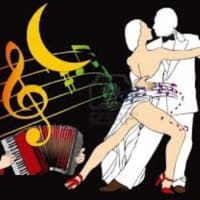
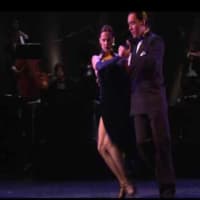



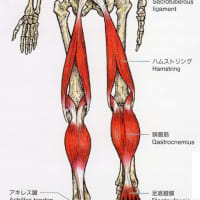


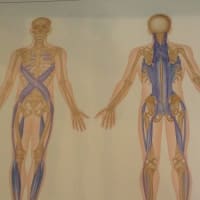
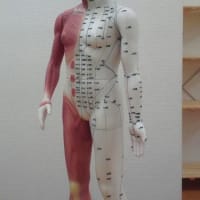
※コメント投稿者のブログIDはブログ作成者のみに通知されます